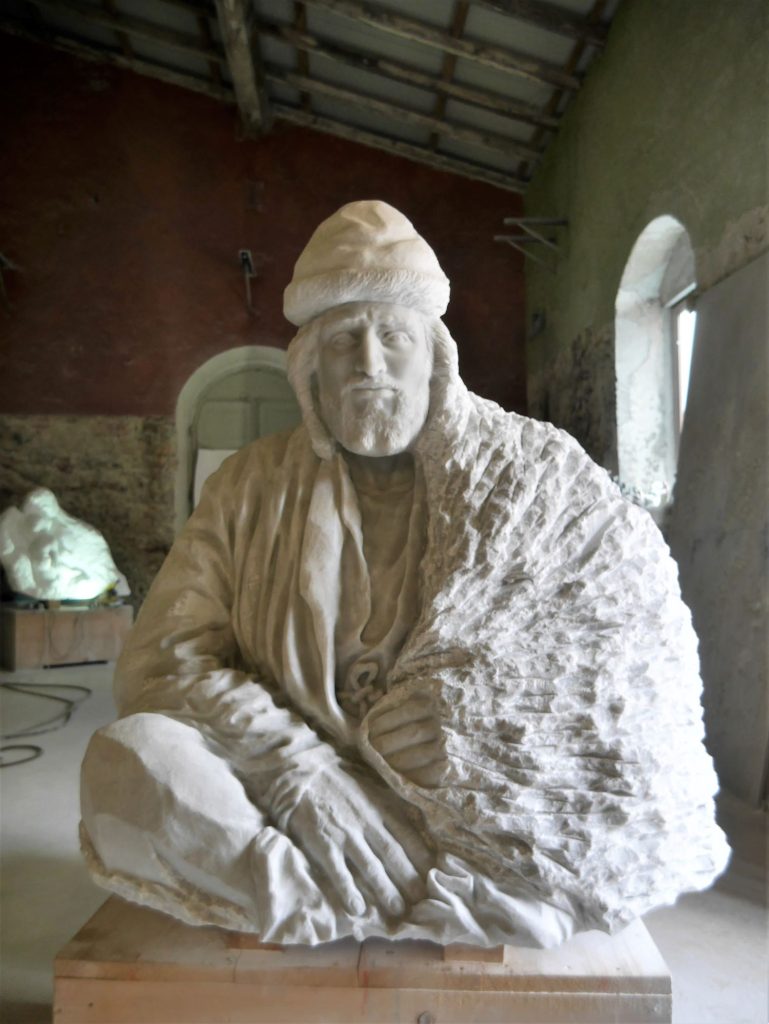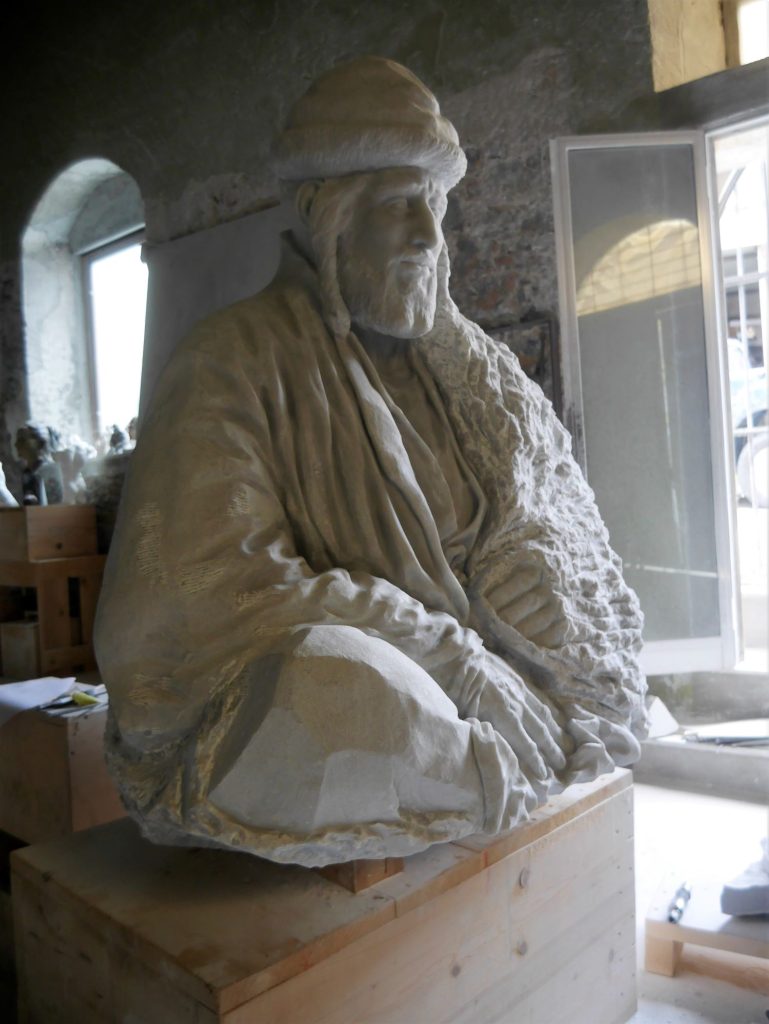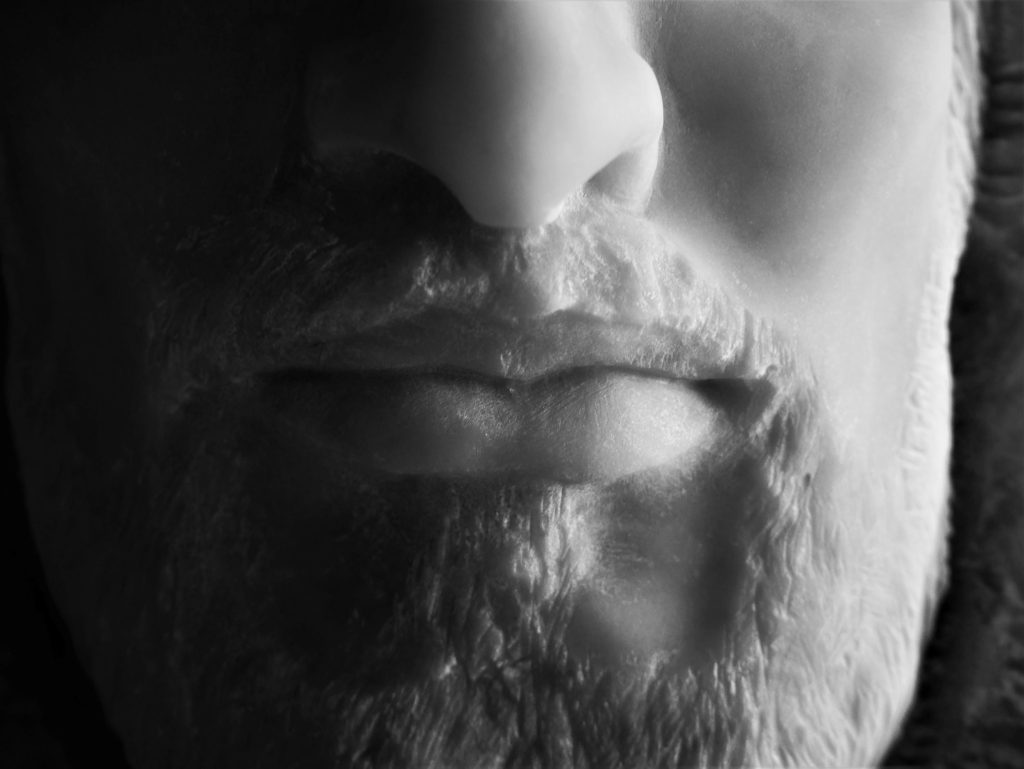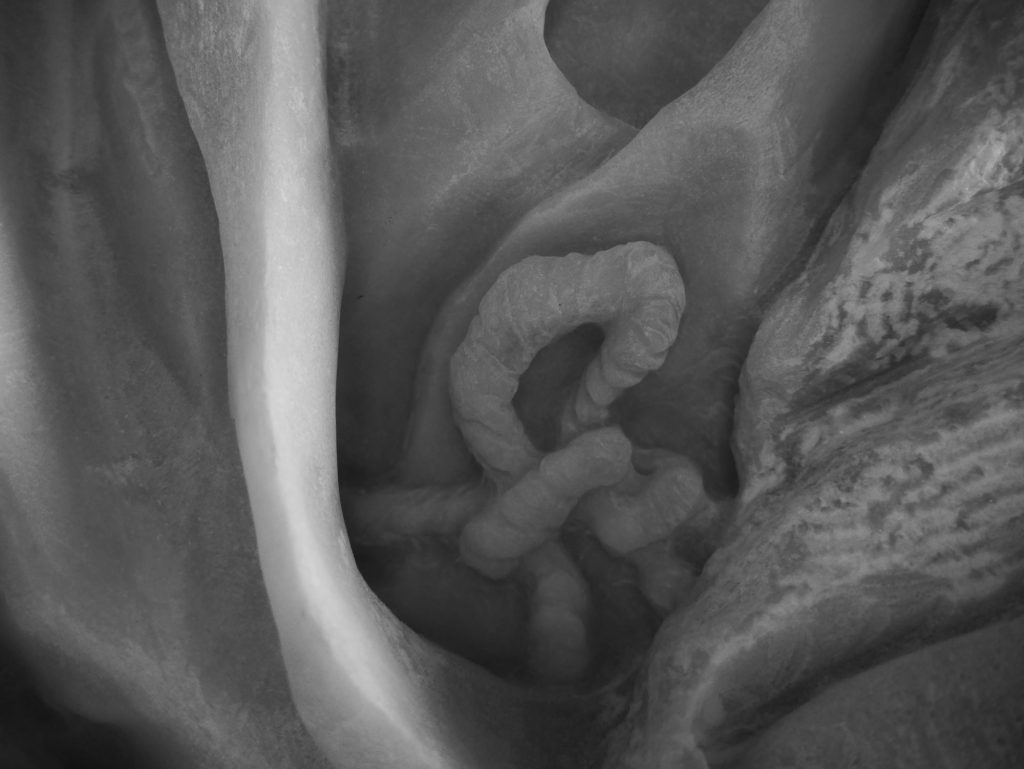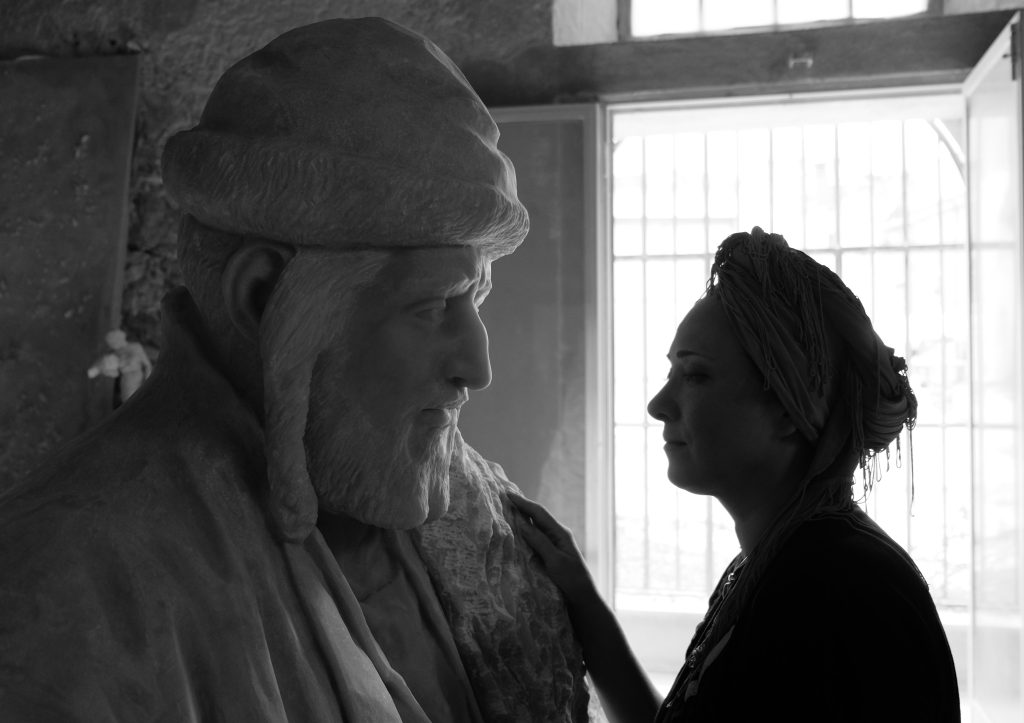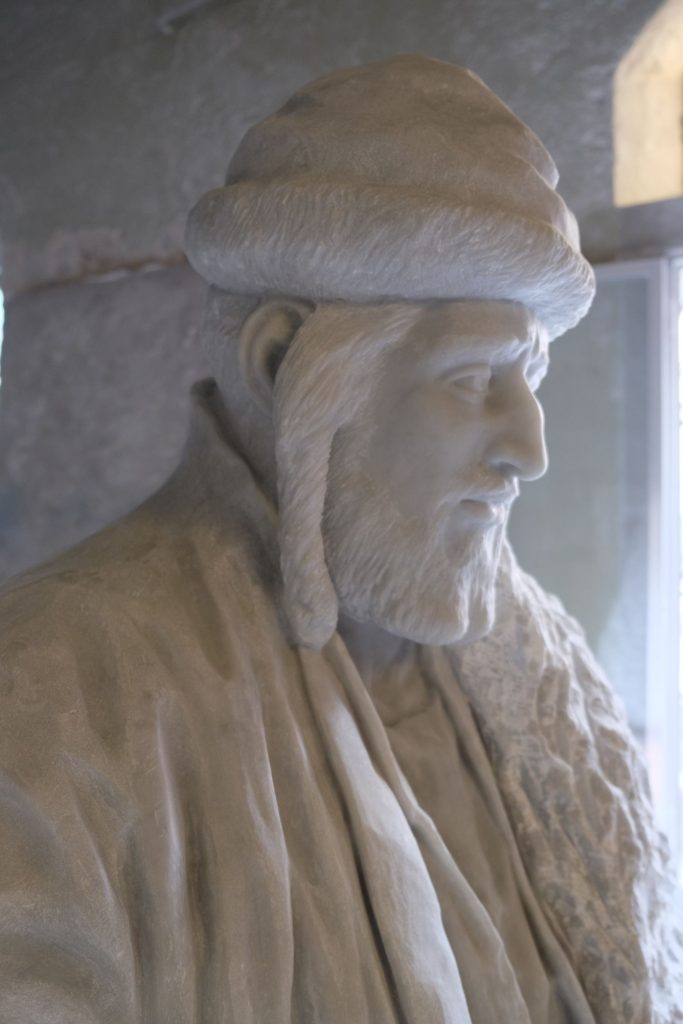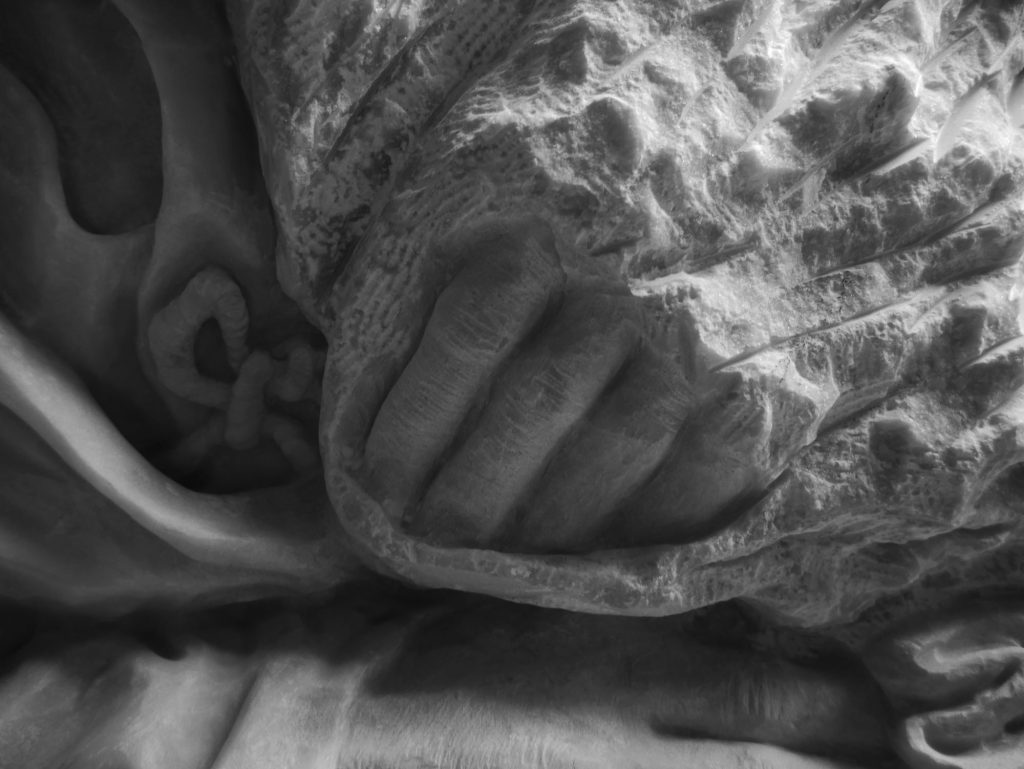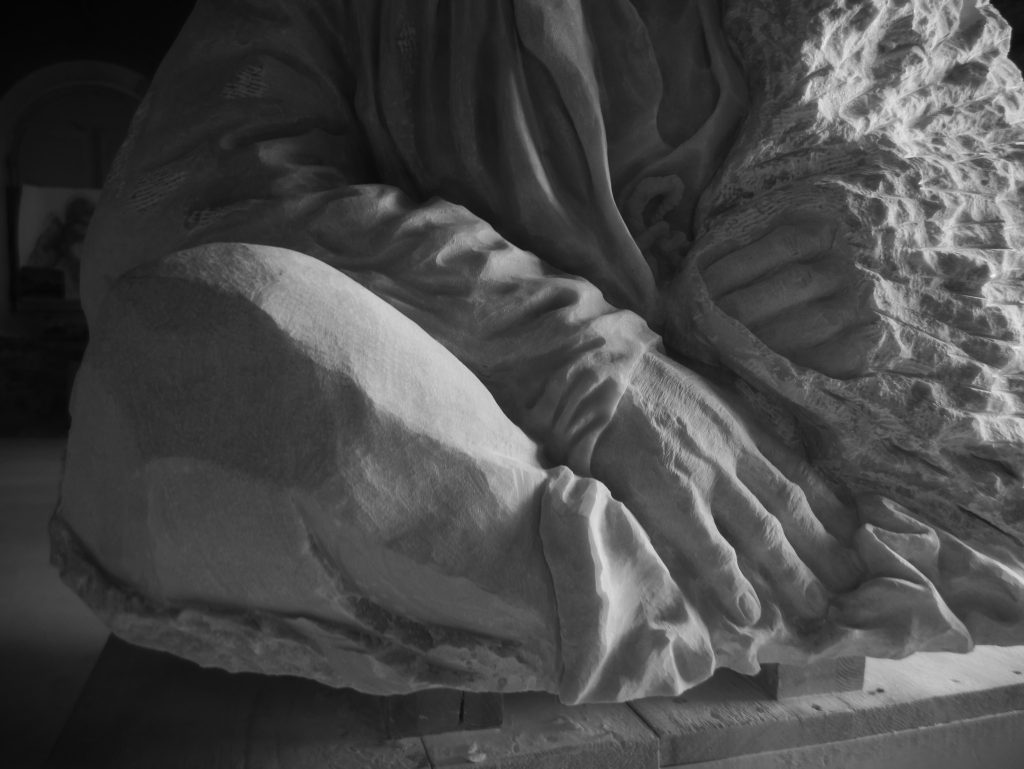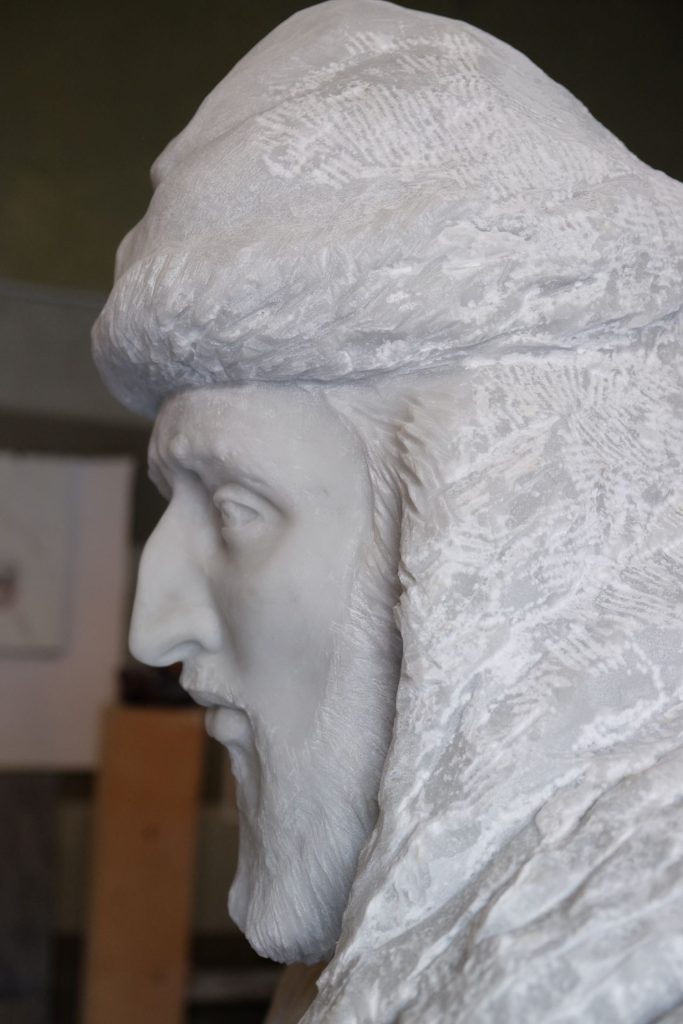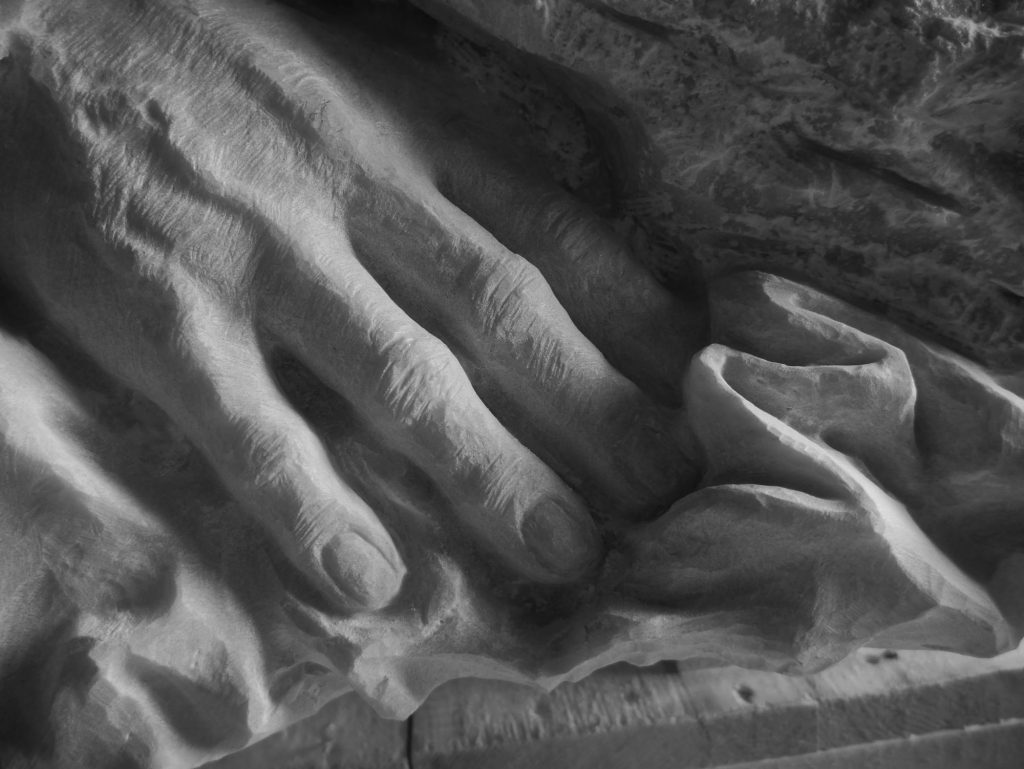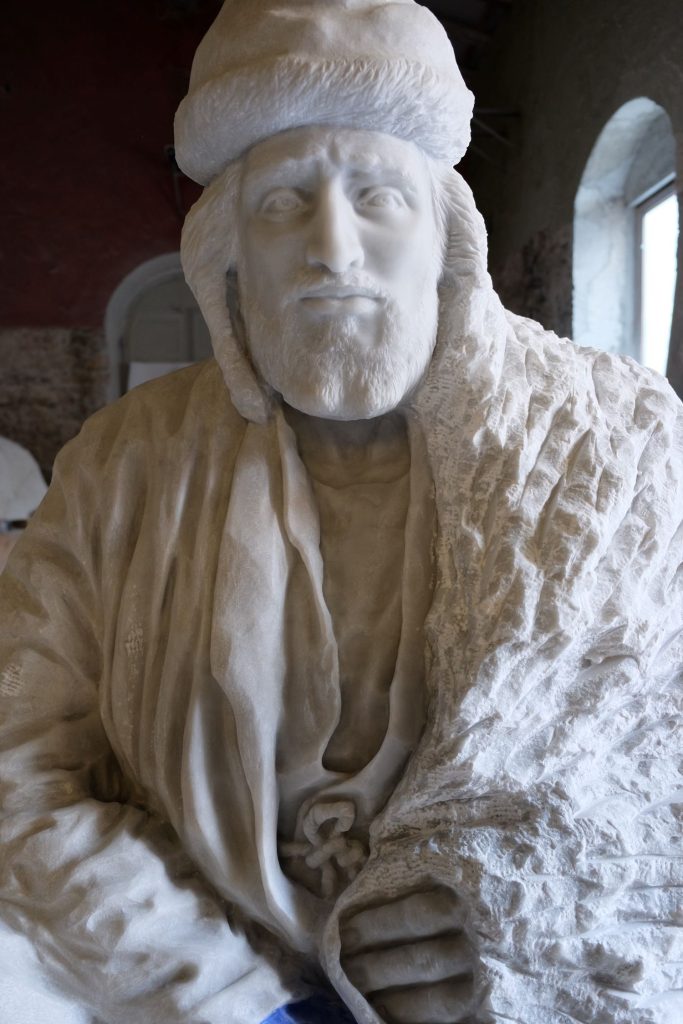Jew of Bukhara

White Carrara marble. 120x120x90 cm
Commission for sculpture garden Oraq, Art Lane, Almaty, Kazakhstan
Bukharian Jews were the name given to the Jews of Central Asia, whose native language was Judeo-Tajik and Persian. The members of this community called themselves Yisroel or Yahudi.
In clothing and appearance, they differed little from the Tajiks, Uzbeks, and Kyrgyz. Their professions were shoemakers, hairdressers, and peddlers.
But there was one peculiarity. The one could not find best dyer of wool and fabrics in the Central Asia. Blue, indigo-soaked hands have become the main national identity. People were called them – kabudgari. From the Tajik kabud – blue. Paints were made independently and the secrets of their production were passed down from generation to generation. Among the Muslims of the emirate, the expression “go to the Jew” meant the intention to give yarn to be dyed blue.
The costume of the Bukharan Jews was closer to the Tajik robe. In addition to the robe, Bukharan Jews also had fitted clothing, which was called “kamzol” (“kamzul”). Bukharan Jews wore a special hat trimmed with fur and a rope belt. According to some sources, this was the requirement of the Muslim authorities of the Bukhara Emirate, since only Muslims were allowed to wear a belt. Jews were required to wear a robe tied with a rope so that everyone would immediately know that he was a Jew. There is another version: the rope over the silk robe should remind of the mourning for the Jerusalem Temple.
My image of a Jew is inspired by archiv photos and documents and images from the paintings of Marc Chagall (Red, Green Jew). the sculpture is divided into 2 parts – one more abstract, turning into a completely raw stone. This symbolizes that this person, these people are fading into history, turning to stone in our memory of the past… The other is more realistic, polished and detailed. This duality reflects the historical fate of this people: on the one hand, the Bukharian Jew dressed and looked like Uzbek or Tajik, he lived in their environment and culture, at the same time, he was different, alien, with a culture and religion alien to them, although he has secret knowledge. The sculpture is intended to reflect this “otherness”, assimilation whith maintaining self-identity, being part of the culture of Central Asia, as well as mystery.
The shape of the sculpture itself (pyromidal, but with elements of the arch of oriental architecture) reflects both the concept of the golden ratio, but is also inspired by real architectural elements from Bukhara and Samarkand. Synagogue in Samarkand, fragment of decoration, Abdukayumbay’s house, Bukhara. (Center for Jewish Art).
